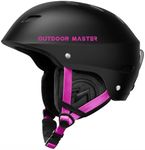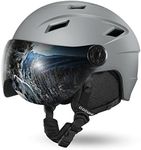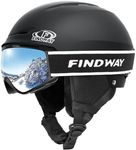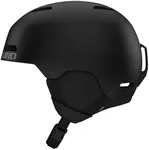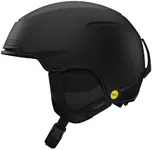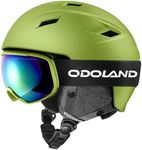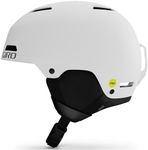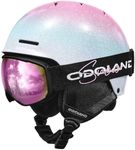Buying Guide for the Best Ski Helmets
Choosing the right ski helmet is essential for both safety and comfort on the slopes. A good helmet not only protects your head in case of falls or collisions but also keeps you warm and comfortable throughout your skiing day. When shopping for a ski helmet, it's important to consider how it fits, how much protection it offers, and how well it matches your skiing style and conditions. Understanding the key features will help you make a choice that keeps you safe and happy while skiing.Fit and SizingFit and sizing refer to how well the helmet sits on your head. A helmet that fits properly will feel snug but not tight, and it should not move around when you shake your head. Helmets usually come in different sizes, and some offer adjustable fit systems like dials or pads. To find the right fit, measure the circumference of your head and compare it to the manufacturer's size chart. Try on different helmets to see which feels most comfortable. A good fit is crucial for safety, as a loose helmet may not protect you properly in a fall, while a helmet that's too tight can cause discomfort and headaches.
Safety CertificationsSafety certifications indicate that the helmet meets certain standards for impact protection. Common certifications include CE EN1077 (Europe) and ASTM F2040 (USA). These standards test helmets for their ability to absorb shocks and protect your head. Always look for a helmet with at least one recognized certification, as this ensures a basic level of safety. If you ski aggressively or in challenging conditions, you might want to look for helmets with additional safety features like MIPS (Multi-directional Impact Protection System), which can offer extra protection against rotational forces.
VentilationVentilation refers to the system of vents built into the helmet to allow airflow and regulate temperature. Some helmets have fixed vents, while others offer adjustable vents that you can open or close depending on the weather. If you tend to ski in warmer conditions or get hot easily, look for a helmet with more or larger vents. If you ski in very cold climates, you might prefer fewer vents or adjustable ones to keep your head warmer. The right ventilation system will keep you comfortable and help prevent overheating or excessive sweating.
WeightThe weight of a ski helmet affects how comfortable it feels during long days on the slopes. Lighter helmets are generally more comfortable and less tiring to wear, especially for children or those who ski all day. However, heavier helmets can sometimes offer more robust protection. When choosing, consider how long you typically ski and whether you prioritize comfort or maximum protection. Try on different helmets to see what feels best for you.
Liner and PaddingThe liner and padding inside the helmet provide comfort and help absorb impacts. Some helmets have removable and washable liners, which is useful for keeping your helmet fresh. The thickness and softness of the padding can vary, so try on helmets to see which feels most comfortable against your head. If you have sensitive skin or plan to wear the helmet for long periods, look for soft, moisture-wicking materials. The right liner will make your helmet more comfortable and hygienic.
Goggle CompatibilityGoggle compatibility refers to how well your ski goggles fit with the helmet. Some helmets have specific features like goggle clips or shaped brims to keep goggles in place and prevent gaps that can let in cold air. If you already have goggles, bring them when trying on helmets to ensure a good fit. If you plan to buy both, look for helmets and goggles designed to work together. Proper compatibility will keep you comfortable and improve your visibility on the slopes.
Audio CompatibilityAudio compatibility means the helmet is designed to work with built-in or add-on speakers, so you can listen to music or communicate with others while skiing. Some helmets have ear pads with pockets for speakers, while others are ready for Bluetooth systems. If listening to music or staying connected is important to you, look for helmets with these features. If not, you can skip this and focus on other aspects.


